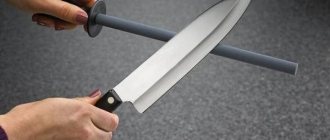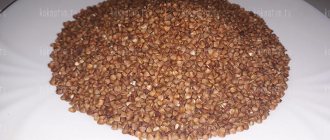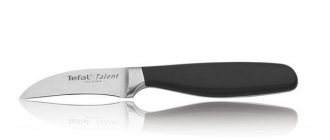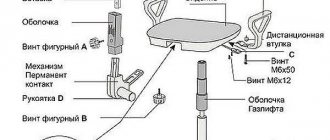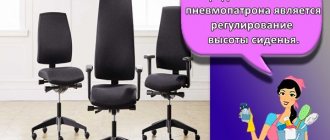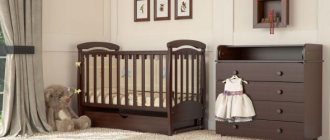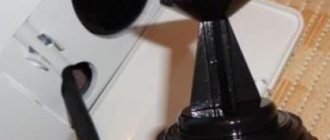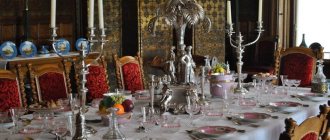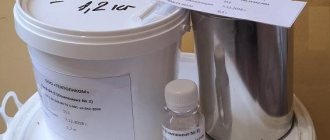Each knife, like any other tool, requires constant proper care, especially since its cutting part needs to be renewed from time to time. It’s not for nothing that people say that you can only cut yourself on a dull knife blade. What usually happens is that the dull blade breaks off from the part being cut off and tears the skin on the hand.
To avoid any accidents and careless injuries, the knife blade must be renewed periodically. We sharpen the blade to a certain angle, which depends on the purpose of the blade and varies from 15 to 45 degrees from the central point.
Sharpening features
During the manufacturing process, based on the professional goals and purpose of the tool, a certain blade shape, thickness parameters and inclination of the cutting edges are selected. It is thanks to the correct inclination of the angles and position of the blade that the most stubborn textures can be processed, since the correctness of the cut is ensured only if certain working positions of the tools are observed.
Optimal knife sharpening angles require maximum pressure on the cutting materials during operation. If the tilt changes, the blades can easily be damaged. It is important to note here that each blade model needs to be sharpened with strict adherence to certain angles. Based on what design features the knife has and what use it is intended for, the optimal sharpening angles are determined.
At the same time, it is undesirable to process some types of professional or chef’s tools (Tramontina and Lansky) yourself; this should be done by a qualified person using special equipment so as not to damage the blade.
Tips for choosing
To decide which model is best to choose, it is important to rely on several criteria:
- availability of free space in the kitchen - if there is no space at all, options such as brass knuckles or musat are suitable, in other cases it is better to pay attention to safer products;
- volume of work - how many devices are in use, how often sharpening or editing is required;
- planned to be used for professional or home purposes;
- financial opportunities - sharpeners are presented in a wide price range, there are effective models in each segment;
- who will use it - if teenagers, it is worth taking care of safety, if women - that sharpening does not require effort.
When there are no great demands on the aesthetics of the process or attachment to traditions, it is better to choose among electrical and mechanical devices. They are easier to use and provide better sharpening quality.
Often, knife sharpening kits are sold in special cases that are convenient for storing tools.
You should use an electric knife sharpener following the rules specified in the instructions.
What is the sharpening angle of a knife
Often, this value is rarely indicated in the technical specifications for a particular tool when purchasing it, although it is one of the important criteria that affects the cutting property of the tool. The lack of relevant information may cause some difficulty for the owner in understanding at what angle to subsequently sharpen the tool. To avoid this, you can use the table below for sharpening angles of knives. However, before that, let's figure out what this value actually is.
The area where the slope on the blade smoothly meets the edges of the cutting edge is called the approach. The angles of convergence of the approach on the two sides of the knife blade are called the “sharpening angle.” Ideally, the blade may have no leads; in such cases, sharpening angles are called trigger angles. But instruments with such a design can be found quite rarely. These mainly include products such as professional Japanese kitchen knives.
The sharpening angles are directly responsible for the purpose and type of work for which the knife was created. The smaller the sharpening angle, the easier it is to cut and the knife becomes sharper, but it quickly becomes dull and needs to be sharpened again. The greater the sharpening angle, the more similar the blade becomes to an ax and the longer it keeps its sharpness.
Effective abrasives
In addition to choosing a household or professional knife sharpener, it is important to choose the right abrasive material. For different purposes and types of knives they will differ:
- Diamond is characterized by hardness and provides maximum efficiency at high processing speeds. But you should not use it regularly - the sharpness of the blade is easily lost, repeated sharpening is required, which leads to a thinning of the cutting edge.
- Ceramic abrasives are not as fast, so they are optimal for dressing. With their help, you won’t be able to achieve an exact angle or form a cutting edge, but you can very well clean the surface from roughness and jagged edges.
- Natural stones are used to sharpen knives made of high-hardness steel. They are characterized by gentle impact and cut metal economically. Sharpening with their help is durable, the knife can be used for a long time. But they are not very suitable for editing.
The wrong abrasive material can cause damage to the knife or premature failure.
Diamond
water stone
Ceramics
Table of sharpening angles for different types of knives
In order to perform high-quality processing and maintenance of tools, it is necessary to maintain the basic sharpening angles of knives for various types of tasks with their use. To control the correct sharpening of corners, you can use a table that presents recommended values for various types of knives:
| Knife types | Sharpening angles |
| Dining rooms for serving | 55° — 60° |
| Kitchen household | 30° — 35° |
| Kitchen professional | 25° — 30° |
| Chefs professional | 20° — 25° |
| Cutting for fish | 25° |
| Cutting machines for meat and large fish | 30° |
| Vegetable cutters | 35° |
| Fruit | 10° — 15° |
| Cutting for root vegetables | 22° — 25° |
| Boning machines for meat | 25° — 30° |
| Chopping axes | 25° — 30° |
| Sirloin | 10° — 15° |
| Penknives | 20° — 25° |
| Tourist / hunting, priority is spiciness | 30° — 35° |
| Tourist / hunting, wear resistance is a priority | 40° — 45° |
| Shoe repair | 30° — 40° |
| Shoe cutting machines | 20° — 25° |
| Universal carpentry | 30° — 45° |
| Chopping (machete) | 45° — 60° |
Independent determination of the knife sharpening angle
When the question arises of how to measure the sharpening angle of a knife, you can act in various ways. Many people purchase special tools for this purpose. However, why not save money and use the budget method described in the instructions below.
Take scissors (non-cutting ones will do) and place the cutting edge between their ends so that there is no gap. On a white sheet of paper, draw a line with a dot at the end. We compare with it the angle between the blades of the scissors.
Opposite the opposite blade (closer to the edge) we place a thin but visible point.
It is important that it is not greasy. The accuracy of the measurement depends on this.
Draw a second line (connect two points with a ruler). We should have a corner.
We take a protractor and determine the degree of the angle. Each indicator will be individual.
In small kitchen knives the sharpening rate may be similar
Please note that knives with a Scandi trigger must be sharpened only at the calculated angle. To avoid mistakes, you need to double-check it two or three times, using different scissors.
Having figured out how to determine the sharpening angle of a knife, you can begin to select sharpening devices.
Terms of use
Two main factors are responsible for high-quality sharpening: abrasive material and maintained angle. If you don’t have the desire or ability to understand this, you can purchase a machine for sharpening knives, where the angle is set, and the types of abrasive discs are specified in the instructions.
But additional knowledge will help make the process even more effective:
- The optimal sharpening angle for kitchen knives is 20–30 degrees. For sirloin it is less - 15, for vegetables - higher (35). For hunting animals it is even higher (30–45 degrees).
- To make it easier to maintain the angle, you can hold the knife with both hands.
- For two-stage processing, you need to start with a coarse abrasive, then finish with a fine abrasive.
- Do not press too hard on the tool so as not to sharpen the blade.
In order for a knife to last longer, you need to not only sharpen it in a timely manner, but also follow other operating rules.
Using musat
Rules for sharpening a knife on a beam
Blade material and knife blade shape
The main materials for the manufacture of blades are metal alloys. The method of their manufacture can be different, from forging to stamping, but they have one thing in common - metal. The metal of the blade is hard; in addition, it must be elastic so as not to break the blade of the knife if it is slightly misaligned.
Also important in the characteristics of the metal is wear resistance, or the tendency to hold an edge. At the same time, the excessive fragility of the blade, which is observed with increased hardness, often leads to chipping of part of the cutting edge upon impact.
Most often used for making knives:
- carbon steels, they have high strength characteristics, are relatively cheap, but at the same time are prone to corrosion;
- alloy steels, with the addition of strengthening and elasticity additives, in this case the metal is a little more expensive, but the alloying additives increase the strength characteristics and resistance to rust;
- damask and Damascus steels, special grade metals obtained by smelting or forging, are distinguished by increased characteristics of hardness, elasticity and resistance to dullness, and at the same time often have a high cost;
- titanium and zirconium alloys, quite expensive metals that have excellent performance characteristics and resistance to corrosion, but at the same time are not widely used due to their cost;
- carbon steel knives coated with various coatings, which are actually metal plates of normal operational parameters, with an inflated cost due to the coating.
The hardness of steel is one of the main characteristics when choosing a sharpening angle, but not a determining one.
In addition to the hardness of the metal, it is also necessary to take into account the shape of the cutting part originally present on the blade. Modern knives can have the following sections:
- wedge-shaped, most common on domestic knives, in this case the edge of the blade is a symmetrical triangle;
- razor, the sides of the triangle have a concave shape, this allows you to keep the sharpening at 15-20 degrees;
- chisel, common on the products of Japanese craftsmen, in this case the blade is sharpened only on one side, the other side is completely flat;
- chopping, sometimes called Chinese, a section that came from Japan with convex wedge edges, this type of sharpening allows you to maintain the shape of the cutting edge for a long time during chopping blows.
Depending on the hardness of the steel and the cross-sectional shape of the blade, the angle of the edges is selected. In addition to these, there are other types of knife sharpening, but they are less common.
It is worth noting that, despite the existing table of sharpening angles, it is selected by a person independently, for the most convenient use of the blade.
Varieties
The range of modern kitchen knife sharpeners is huge. Models differ in operating mechanism (electric, manual or mechanical), sizes, materials of manufacture, and functions. Some are designed for roughing, others for sanding, and others do both. Some products have an adjustable sharpening angle, while others have to maintain it manually.
Electrical
Initially, this type of knife sharpener provided professional food preparation in restaurant kitchens and factories. This is due to the fact that electric models combine high speed with efficiency. The first versions of the products were quite large, but today you can choose compact devices that can be easily placed in your home kitchen.
The advantages of the device include ease of operation and safety. You don’t need to exert much effort during use; even a teenager can handle this sharpener. The action is based on rotating diamond discs, which can carry out rough grinding or polish the blade. The sharpening system itself maintains the correct angle of inclination. This number of advantages affected the price - the high cost of the electrical appliance remains its main disadvantage. There are budget options, but the angle of inclination in them is set manually, which is not very convenient.
Mechanical
With proper use of these sharpeners, you can achieve a high sharpness of the blade, but in any case it will become dull faster than if the process was carried out using electrical devices. For home cooking, this is rarely a disadvantage - unless one knife is used for all cooking processes. Essentially, these are two parallel abrasive wheels (steel or stone) in a plastic case. The sharpening angle (20–30 degrees) has already been set.
With table support
A variety loved by many for its compactness, safety and simplicity. More affordable than an electric knife sharpener. Basic version - with three grooves:
- the first is for rough peeling;
- the second is for trimming the cutting angle, smoothing out defects and nicks;
- the third is used for knives with one-sided sharpening.
The algorithm is simple: with one hand you need to hold the sharpener by the handle, pressing it to the table, with the other you need to move the knife along the groove. The risk of injury is minimal, all sharp surfaces are hidden inside.
Brass knuckles
Despite the main drawback - the quality of sharpening is not very high - this is a popular type of sharpener. What makes it popular is its low cost and compactness. However, this product quickly fails, and it is also dangerous - if the knife slips while sharpening, you can get injured.
The brass knuckles are put on the hand - by analogy with the weapon that gave the sharpener its name. With the second hand, the knife is moved along one of two zones. Using the device, you can perform rough processing and also level the cutting surface.
It is optimal to use brass knuckles while relaxing in nature - it will not take up much space and will do a good job of quick sharpening. For everyday use, it is better to choose a different type of sharpener.
Vacuum
This variety has 1–2 sharpening zones. It got its name thanks to a special suction cup - with its help the sharpener is firmly installed on the table. Of course, it is more expensive than brass knuckles, but compared to it it is much safer, and the cost is still low.
The structure is placed on a flat, hard surface and slightly pressed down for secure fixation. The handle that creates the vacuum moves down - now the product will not budge until it is lifted back up. Then the process is standard - the knife is moved along the abrasive. Usually a minute is enough for the entire sharpening. Besides knives, this design is used for other sharp tools.
The first drawback of the device is common to all mechanical knife sharpeners: it is difficult to maintain the correct angle. Also, vacuum products have one processing zone, which reduces the durability of the result; cutting properties are quickly lost again.
With knife holder
Compared to previous options, it looks quite cumbersome - for home use, such a unit is useful only if there is a sufficiently wide surface and storage space. Sharpening takes a long time; installation increases the time spent on the entire process. However, these are, rather, the features of the product than its shortcomings - for many, the need to free up time, prepare a complex device and carefully sharpen it becomes a source of aesthetic pleasure. Moreover, the process is unusual - unlike previous models, here the knife is fixed with rubber clamps, and a special device with fixed stones moves along it. At first, the machine requires skill, but if you master it, you can get a durable and very high-quality sharpening that justifies the high cost.
Manual
The advent of mechanical and electric models should have forced manual knife sharpeners out of the market, but this did not happen. Perhaps adherence to tradition plays a role. Or maybe people are attracted to the feeling of complete control over the process.
Sharpening stones
A universal device for sharpening knives and other sharp tools - from scissors to axes or scythes. When choosing this option, you will need the help of a professional: you need to take into account the grain size of the stone and select the correct angle of inclination. The process also requires accuracy and attentiveness, otherwise you can easily get hurt.
Natural sharpening stones are mined from deposits around the world (in America, Japan, Russia). Their most common varieties are:
- Arkansas - a combination of quartz and rocks;
- Japanese water stone.
A worthy alternative to natural materials are synthetic analogues:
- diamond - made using diamond chips;
- ceramic - produced using advanced technologies;
- aquatic - an analogue of the natural option.
If you want to experiment, it is better to purchase a model made of artificial stone - it is more budget-friendly. Designs with natural stones are quite expensive - this is due to the depletion of natural materials. In terms of efficiency, both options are the same.
Japanese water
Such stones are divided into natural and artificial. The first version of the material is mined near Kyoto, a city in Japan. A distinctive feature of abrasives is the highest precision of sharpening with a soft surface; they can even cope with hardened steel. Natural stones initially have their own grain size and hardness. In artificial ones, adjustment of these parameters occurs during production.
Japanese water stones vary in grain size:
| Type | Number of units | Purpose |
| Rough | Up to 1000 | Creating a corner, cutting edge |
| Average | 1000–3000 | Editing after rough peeling |
| Thin | from 3000 | Final editing, correction of minor defects |
The "water" in the name means they need to be soaked in liquid for 15 to 20 minutes before use. All air bubbles come out of the stone, and the abrasive properties increase. Otherwise, the material becomes clogged with metal shavings, the stone becomes smooth and ceases to perform its function.
Ceramic
They are made of special ceramics - it provides effective sharpening and practically does not wear out. A manual ceramic sharpener is not suitable for rough processing as the process will take a very long time. But the edit turns out to be of very high quality. Unlike water-based sharpening stones, this type does not need to be wetted before use - just rinse after use to get rid of metal shavings and other process residues.
Diamond
Diamond is known for its hardness - the highest among other minerals. Due to this, the sharpening speed significantly increases, but not durability. A hard diamond stone is practically not subject to wear and can last a very long time. Like ceramic sharpening stones, it is enough to rinse it to remove excess metal shavings - they will not clog inside the whetstone. With the help of diamond sharpening stones, it is not possible to carry out a fine edit - they do not smooth out roughness, and the surface does not turn out to be perfectly smooth. The main disadvantage of the model is its high cost.
With fixed rods
This variety is used only for editing - eliminating small nicks, minor roughness and defects. This is due to the fact that such sharpeners cannot create an angle from scratch. But they are distinguished by greater convenience compared to bars - the rods are fixed in a special die at a given angle, and the blade is moved along them. This design is dangerous; the hand with the knife can slip. The machine is pressed to the table manually, which is not very convenient. Among other types of sharpening stones they differ in average cost.
Musat
A device for regular editing. This is an oval (sometimes round) profile rod on a handle by which it must be held. The pin itself is made of metal, coated with ceramic or diamond coating. The process of use is not very safe - the musat is suspended while the blade is drawn along the rod. The advantages include high processing speed and gentle handling of the knife (metal is not cut off from the cutting edge, the product will last longer). It is enough to run the cutting profile along the rod 3-4 times, and the process is completed. The price range is wide, depending on the availability and composition of the spray. Models without it are the most affordable, while models with diamond are quite expensive.
Sharpening systems
A set of several (usually 3-4) sharpening stones and special abrasive pastes is called a sharpening system. The rating of the best types of knife sharpeners gives it first place, but the high cost and impressive dimensions limit the scope of use in production. Sharpening machines allow you to restore the cutting properties of any product, from knives (including ceramic) to scissors and other sharp tools. The process itself is fast and safe. Unlike most previous models, there are no problems with the angle; the system ensures the accuracy of this parameter. You can change the sharpening stones to achieve the desired cleanliness and sharpness of the cutting edge. Another advantage is durability. After sharpening using sharpening systems, the sharpness of the blade is maintained for a long time.
It will take a lot of time to assemble a knife sharpening system, so it is better to do it once without further dismantling.
Pocket products
Among the listed models there are several, the size range of which is wide and includes pocket products. These sharpeners can be carried with you or taken on the road. The design features remain the same, only the size changes. Pocket products include a sharpening stone, brass knuckles and grindstone, as well as devices with rods - fixed or removable. Due to its small size, sharpening a knife with such a product is not very convenient - in addition, the abrasive surface area decreases, which reduces the quality of the result. But it's much easier to cut yourself.
Reducing the size does not always make the product cheaper. When a sharpener is also used instead of a keychain, manufacturers pay special attention to the design - this, on the contrary, increases the cost.
Cutting edge and abrasives for sharpening
Despite the apparent simplicity of sharpening the blade, in fact the shape of the cutting edge looks quite complex. The sharpening angle creates only the general edges of the cutting edge; the edge itself is formed by the leads, narrow strips of the blade, which constitute the edge that cuts the material.
In order to remove the cutting edge of the blade, it is necessary to process the slopes with abrasive, creating a wedge.
Selecting an abrasive is not an easy task; in the modern world, various types of synthetic sharpening materials are widely used, such as electrocorundum or diamond bars with a binder.
But, as before, professional sharpeners believe that the best result is achieved only when using abrasive bars of natural origin: novaculite or Arkansas, Japanese water stones.
Sharpening knives requires the mandatory use of oil or water. This allows you to wash away dirt and solid abrasive particles from under the blade, which would otherwise scratch the blade; in addition, the presence of lubricant will protect the surface of the stone from ingrained dirt and metal shavings.
It should be noted that the surface of the sharpening stone must be perfectly flat, otherwise the cutting edge will be wavy, which will have an ambiguous effect on the quality of sharpening.
You need to be especially careful when sharpening a knife one and a half times; in this case, there is a risk of cutting your hand when sharpening on the sharp edges of the blade. For perfect sharpening, it is necessary to alternately change the grain size of the stone, moving from coarse grain, whose task is to roughly create edges and descents, and ending with polishing, which polishes descents and creates leads.
The grain size of the abrasive is determined by the size of its particles; the larger the particle size, the rougher the processing of the blade edges.
It is optimal to have 2-3 whetstones with different values for sharpening a knife. The first one is for rough sharpening, the second one is for edging and the third one is for grinding. Although the final straightening can be done with a polished piece of steel, a leather belt or a ceramic block.
Everything you need for editing and finishing
Even if the blade is not perfectly smooth, the knife still needs to be sharpened to remove microscopic burrs that can be missed even by very thin sharpening stones. It is necessary that the blade is positioned against a material into which it can be slightly pressed. In this case, thin metal shavings are removed with abrasive pastes.
The most useful for home sharpening will be the paste of the State Optical Institute (GOI) of medium and fine grain. Choose a specific number at your discretion. The paste should be applied to a small board covered with suede, and the blade should be pulled along it almost effortlessly until the solid particles do their job.
Finishing can also be carried out on hard stone. Dressing stones are made from rare natural materials such as slate or feldspar. The hardness of such a material is low, and it is not capable of greatly disturbing the geometry of the edge, but it quite easily breaks off thin metal shavings. It is convenient to control the quality of sharpening at different stages using a magnifying glass or a pocket microscope.
What determines the sharpness of a knife?
Sharpness is the main characteristic of a cutting tool. The higher its degree, the easier the knife enters the material. What does this characteristic depend on?
- Properties of steel. The composition and grade of the metal directly affect the properties of the blade.
- Features of mechanical processing of the part.
- Temperature treatment during the hardening process.
- Features of the cross-section and dimensions of the blade.
- Sharpening quality. The main characteristic that affects sharpness.
We see that the effective quality of a knife depends on the coordinated work of several specialists. Fortunately, modern industry does all this work for us; all we have to do is maintain the tool in working condition, which involves its timely and correct sharpening.
How to sharpen a serrated bread knife?
Agree, cutting soft or crispy bread is much more convenient with a sharp knife. But most sharpening methods are not suitable for serrated knives. What to do?
Chef'sChoice wouldn't be the world leader in sharpeners if they didn't think about this! Multifunctional models of electric sharpeners of this brand are also suitable for sharpening serrated (serrated bread) knives. You can sharpen a serrated knife in the last Polish/Finish block of any Chef'sChoice electric sharpener. Usually it is enough to make 2-3 pairs of alternating passes in the left and right grooves.
Read also: Circular saw Hurricane mcs 165 bearing replacement
REGISTRATION HAS BEEN TEMPORARILY CLOSED BECAUSE THE SPAMBOTS HAVE ARRIVED... TO REGISTER, WRITE TO THE EMAIL LISTED HERE https://woodcraft.if.ua IN CONTACTS
| Current time: 01 Aug 2021, 21:17 |
Time zone: UTC
Blade sharpening
Proper sharpening of knives is carried out in the following order:
- Preparation. The sharpening block is placed on a flat surface; if necessary, a towel or cloth is placed under it so that when working, it does not slip on the table surface. It is also worth placing a container of water or oil on hand to wet the blade.
- The knife is placed with the blade on the leveled surface of the block at an angle of 40-45 degrees with the tip away from you; it is best to install an angle limiter on its blade. Stationery clips performed well in this regard. This will help maintain the sharpening angle.
- The blade is sharpened evenly by moving towards itself, the cutting edge should be smooth when exposed to light, without wavy bends. The wedge itself is symmetrical, the edges are the same in size.
- After rough straightening and creating slopes, it is the turn of a finer-grained block. The metal is periodically wetted with water. This is necessary to wash away any remaining abrasive and metal dust. After the blade slopes are ground, the bars must be washed in running water and soap, the knife itself must be washed and wiped thoroughly.
When editing, you should ensure that the sharpening angle is maintained; it is for this reason that it is recommended to use limiters.
They will help you initially maintain the angle, and later, as you gain experience, you can sharpen the blade “by eye.”
How does sharpening differ from straightening?
There are several significant differences between these processes. Comparative characteristics are given in the table.
| View | Peculiarities | Scope of application |
| Sharpening (coarse grain processing) | The metal is cut, thereby forming the cutting edge and angle | Processing new sharp objects or very dull objects. Also suitable for cases where the edge has completely disappeared |
| Editing (fine grain processing) | The metal is not cut, small nicks are smoothed out. The angle is not formed, but it can be corrected | Editing can be done regularly when the product has become a little dull. Chips and defects are often so small that they are invisible to the eye, so do not wait for obvious damage to apply correction |
Sharpening is rarely carried out without further editing. This way you can achieve the maximum effect: first give the blade the desired shape and angle, and then treat it with fine grain, making it smooth and even.
Edit
Sharpening
Types of sharpening
There are several types of knife sharpening:
| Types of knife sharpening | Description |
| Lenticular | The edge of the blade is sharpened, and the bend of the blade can also be processed. With such sharpening, blades are distinguished by a high level of cutting ability; they are able to “work” even on thick material, and, if necessary, serve as a chopping or piercing tool. Lens-shaped sharpening is carried out exclusively by hand, therefore it is used only in the production of professional knives - kitchen, hunting, tactical. |
| Razor sharpening (flat) | It is carried out at a minimum degree (10-20) and is suitable for processing only surgical instruments, razor accessories, and blades for fine cutting. In everyday life, such sharpening is done for hunting knives for special purposes - for example, skinning knives, fishing knives. |
| Wedge sharpening | It is rarely used, because after it the cutting ability of the tool increases, but the strength of its blade decreases. During the process, the side surfaces of the blade must be grinded and polished, but at home this is quite problematic. |
| Pentagonal sharpening | It is widely used for kitchen and travel knives; even household devices for this process often perform just this type of knife sharpening. After it, the blade slightly loses its tactical abilities, but its service life does not decrease. |
| Double-sided asymmetric sharpening | Combines enhancing the tactical and physical abilities of knives. The result will be ease of cutting even the hardest products, flawless chopping of material without any effort. This type of sharpening is often used in the manufacture of Japanese kitchen knives, which are of high quality. A special feature of knives with double-sided asymmetric sharpening is that the edge of the blade does not enter the cut on the product, but is constantly held on top. |
There are many ways to sharpen knives, they will differ depending on the tool used for this.
Sharpening stone
A whetstone, or whetstone, is an almost eternal thing. It can serve for years, passed on from generation to generation. Surely, in your kitchen cabinet there is a block left over from your grandfather. Sharpening knives using a whetstone is a universal and most convenient way. It can be used in a city kitchen, on a hike and in a country house;
Place the block horizontally on the table (i.e., the long side should go from left to right). It will not be possible to sharpen a knife correctly with a whetstone if the table is unstable and the “stone” itself has incorrect geometry and does not lie flat.
Take the knife by the handle and place the fingers of your other hand on the blade.
Slowly and evenly move the knife along the block in a semicircular path, maintaining the angle of inclination (20–25°). Each side of the blade should take 5-7 minutes.
Master's secrets: sharpening will be smoother if you drop a few drops of oil on the block and moisten the blade with cold water.
Sharpening stone is the best choice
We suggest you read: How to get rid of the smell of dampness in your apartment once and for all
The bars come in different shapes and with different grain fractions. The larger the grain, the more metal it removes from the blade. Sharpening is quick, but rougher. A good sharpening stone can be expensive, and a real master may need several stones for first-class sharpening - at a minimum, with a coarse grain (for basic sharpening) and a fine one (for finishing). A good solution would be a universal block, different edges of which have different grain sizes.
Imported bars have a special marking that allows you to determine the grain size (it is measured in different units, but the general principle is the same: the larger the number in the marking, the finer the grain). Russian bars are not marked. You will have to select them “by eye”. As for quality, the bars from different producing countries are approximately equal. The price can be a guideline: the more expensive, the better the quality of the material. Diamond coated stones are the most valued.
To make the blade perfect, after the main sharpening, make several strokes on a fine-grained stone (or fine sandpaper). The video will tell you more clearly how to sharpen a knife with a whetstone.
How often should you sharpen?
It is believed that knives need to be sharpened as they become dull, but experts recommend this “event” be carried out at least once a week. In this case, it will be possible to maintain the cutting ability of the tool, and the sharpening itself will take place quickly and efficiently.
If we are talking about manual/mechanical sharpeners with wheels or musat, then they can be used at least every day - the knife will be sharp, but not for long. These devices are needed for straightening the knife, and not for fully sharpening it.
How to properly care for a musat knife
The musat knife can be actively used for a long time, but for this you need to properly care for it:
- after use, the tool should be stored suspended - on a hook or in a special stand;
- You need to wash the musat with warm water, any detergent, but without abrasive particles in the composition;
- if the “rod” is diamond coated, then the tool should be stored separately from any other hard objects;
- Ceramic tools should not be dropped or knocked - even a small chip or shallow scratch makes it impossible to use the tool for its intended purpose.
The tool must be stored in a special stand
What knives cannot be sharpened yourself?
To begin with, it is not recommended, in the absence of experience, to sharpen on your own at home those blades that are of some value or are especially convenient and necessary for work. If you sharpen them incorrectly, you can seriously damage the blade. In such cases, it is better to gain experience on some less valuable samples, and then, if you have the skill and appropriate tools, start processing other samples.
In addition, difficulties may arise with sharpening serrated knives - knives with a serrated or wavy cutting edge. Of course, there are household sharpeners designed for such blades, but there are many types of serrators; in other models, you can restore the sharpness of the edge yourself only with experience, specific skills and suitable tools, and even this is not always possible.
As you can see, the process of sharpening knives is not so simple. When taking it on, you need to imagine the procedure, the strengths and weaknesses of a particular sharpening tool, as well as the properties and purpose of the blade itself. If all this is available, there will be no problems with sharpening.
How to Store Knives to Keep Them Sharp
Storing your knives safely and securely will help keep their blades in better condition.
Universal knife block
Storing knives in any knife block is a big improvement over your kitchen drawer. The universal knife block accommodates any combination of knives in a very small space.
Magnetic strip for knives
Attach a magnetic knife strip to the wall to free up space. The strip will hold a knife of any length and the knives will be visible.
Safe knife case
Separate sheaths store the knife completely and securely. Made from polypropylene, they are a good choice if you want to keep your knives in your kitchen drawer.
